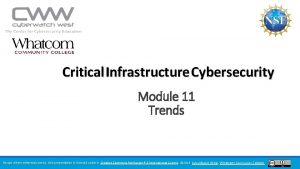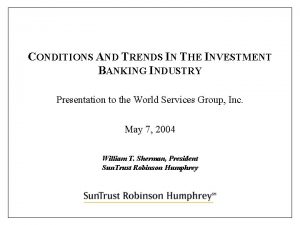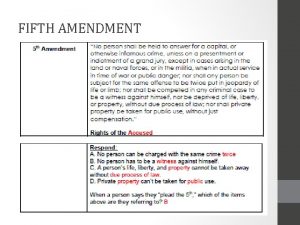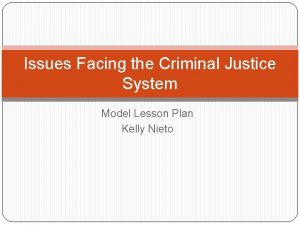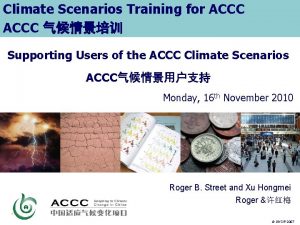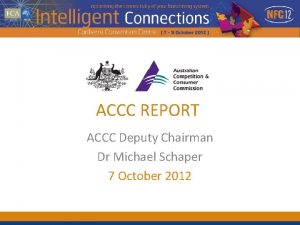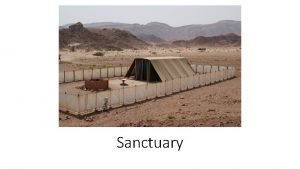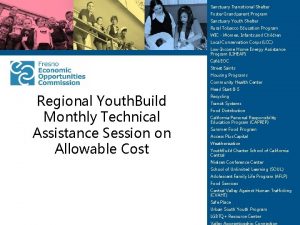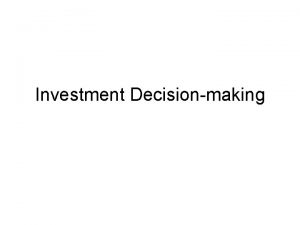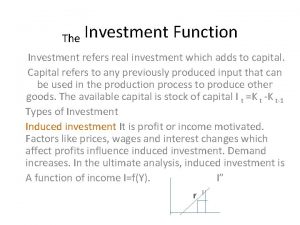Trends in Infrastructure Investment Eighth ACCC Conference Sanctuary
























- Slides: 24

Trends in Infrastructure Investment Eighth ACCC Conference Sanctuary Cove, 27 July 2007 Jeff Balchin Director

Purpose Attribute cause for any inadequacy of infrastructure investment Increasingly difficult Assess adequacy of infrastructure investment from aggregate data Increasingly interesting Understand historical trends in infrastructure investment 2

The null hypothesis… 3

Method / measurement Methodological issues: Extent of aggregation / accuracy Measure quantities / volumes Public vs. private participation Measures: Value of past investments Accumulated depreciation Capital stock User cost of capital Annual depreciation Capital services Decreasing level of reliability Investment / expenditure 4

Data series Investment Engineering construction activity (ABS) More disaggregated (9 classes of infrastructure) September 1986 onwards Excludes buildings / land Commenced vs. Undertaken vs. Remaining Gross fixed capital formation (ABS, OECD) Less disaggregation (3 classes of infrastructure) 1960 onwards Includes buildings, excludes land Capital stock (ABS) Same breakdown as GFCF Gross asset value = reproduction cost Assumed deterioration of stock of assets Capital services (ABS, OECD*) Same breakdown as GFCF for Australia More aggregated for OECD data 5

Breakdown of data: ECA vs. GFCF Engineering construction activity Gross fixed capital formation 6

1. Trends in investment 7

Investment – Engineering Construction Activity (I) Infrastructure construction undertaken (chain volume measures, $m, reference year 2004 -05) ABS, Engineering Construction Activity, Cat 8762 Table 6; Deflators purchased from National Accounts Branch, Underlying indexes for Engineering Construction, March Quarter 2007. Annual expenditure more than doubled since 1990 Above average growth – pipelines, railways, roads, harbours Average growth – telcos, electricity Below average growth – bridges, water and sewerage 8

Investment – Engineering Construction Activity (II) Total Infrastructure construction (chain volume measures, $m, reference year 2004 -05) ABS Engineering Construction Activity, Cat 8762, Table 6. Infrastructure construction by owner/operator (chain volume measures, $m, reference year 2004 -05) ABS Engineering Construction Activity, Cat 8762, Tables 8, 10, 11; Deflators purchased from ABS National Accounts Branch, Underlying indexes for Engineering Construction, March Quarter 2007. Estimates of remaining infrastructure construction activity systematically exceeds actual remaining expenditure Large increase in infrastructure controlled by the private sector: 13% at start of the period, 42% at the end of the period 9

Investment – Gross Fixed Capital Formation Gross fixed capital formation in infrastructure industries (chain volume measures, $m, reference year 2004 -05) ABS National Accounts, Cat 5204, Table 71. More interesting period appears to be the 1980 s Caused by state government financial problems? Accumulated gold plating? 10

Infrastructure capital stock / services Net capital stock Capital services index (chain volume measures, $m, reference year 2004 -05) (1964 -65 = 100) ABS National Accounts, Cat 5204, Table 89. Similar pattern, but dampened ABS National Accounts, Cat 5204, Table 71. Changes in level of ‘services’ dependent on asset lives 11

2. Adequacy of investment 12

Measuring adequacy Upward trend in infrastructure investment is unexpected Economy has grown Need more infrastructure How much does the stock of infrastructure need to grow as the economy expands? In line with GDP growth? 13

Investment – Engineering Construction Activity Infrastructure construction completed (per cent of GDP) ABS, Engineering Construction Activity, Cat 8762 Table 6; Deflators purchased from National Accounts Branch, Underlying indexes for Engineering Construction, March Quarter 2007. Positive story – growth in all sectors except water, sewerage and bridges at or above GDP growth 14

Investment – Gross Fixed Capital Formation Gross fixed capital formation in infrastructure industries (per cent of GDP) ABS National Accounts, Cat 5204, Table 71. Picture not so rosy when compared to the heydays of the 1960 s 15

Infrastructure capital stock / services Net capital stock Growth of capital services relative to GDP (per cent of GDP) (1964 -65 = 100) ABS National Accounts, Cat 5204, Table 71. ABS National Accounts, Cat 5204, Table 89. 16

Investment – international comparisons GFCF: Electricity, Gas & Water supply (Per cent GDP) GFCF: Post and Telecommunications (Per cent GDP) GFCF: Transport and Storage (Per cent GDP) The OECD STAN Database for Industrial Analysis 17

Capital services Growth of capital services relative to real GDP (non-residential construction assets, 1985 = 100) OECD, Productivity Database, 6 October 2006; OECD Factbook 2006: Economic, Environmental and Social Statistics 18

Growth of capital services and GDP: Half empty or half full? Growth rate of capital services to GDP Growth rate of GDP to capital services Two observationally equivalent hypotheses: Australia is underspending relative to the better performers – we should be concerned Australia has managed to achieve substantial GDP growth while only needing a modest increase in infrastructure – we should be impressed 19

Capital services and GDP growth Growth of capital services to GDP Real GDP growth Relative GDP growth appears to explain most of the differences in growth of capital services relative to GDP Indeed, the ‘losers’ (in terms of falling capital services to GDP) have been winners (in terms of GDP per capita) 20

Why may infrastructure needs decline as a proportion of GDP? Economies of scale / scope / density Changing composition of the Australian economy Efficiency in investment decision making Forecasting tools Financial appraisal techniques 21

Changing demand for infrastructure Industry Shares of GDP Population Density Department of Environment and Heritage, State of the Environment Second Technical Paper Series. Australian Bureau of Statistics, Year Book Australia 2005. Reducing importance of manufacturing, increasing importance of services Population now much more dense 22

How to assess adequacy then? Focus on quantity / quality of outputs rather than quantity of inputs Shortcomings in data – a priority Cannot answer all questions – i. e. whether investment is optimal A micro-analysis is the only reliable method Social costs and benefits 23

Final remarks Private sector / capital is now extremely important Hence, getting the policy settings right is a priority Making robust inferences on issues relevant to infrastructure investment is difficult Trends may be easy, establishing adequacy and causes much harder Focus on outputs rather than inputs would be an improvement Need for improved data collection No substitute for proper analysis of economic costs and benefits 24
 Critical infrastructure cybersecurity trends
Critical infrastructure cybersecurity trends Investment banking industry trends
Investment banking industry trends Fixed investment and inventory investment
Fixed investment and inventory investment Eighth letter of the alphabet
Eighth letter of the alphabet Quarter inch fraction
Quarter inch fraction What is the eighth wonder
What is the eighth wonder Anagram of eighth
Anagram of eighth Seventh amendment meaning
Seventh amendment meaning Criminal justice lesson
Criminal justice lesson Reuptake psychology
Reuptake psychology Arterier og vener
Arterier og vener Psychology eighth edition david g myers
Psychology eighth edition david g myers Operations management eighth edition
Operations management eighth edition The fifth, sixth, seventh, and eighth amendments protect *
The fifth, sixth, seventh, and eighth amendments protect * Eighth amendment excessive bail
Eighth amendment excessive bail Eighth planet from the sun
Eighth planet from the sun 8th commandment catholic
8th commandment catholic Png investment conference 2019
Png investment conference 2019 Durham sanctuary knocker
Durham sanctuary knocker Without sanctuary
Without sanctuary Sanctuary sites in the body
Sanctuary sites in the body Haven is to sanctuary as amiss is to awry
Haven is to sanctuary as amiss is to awry I praise him in the sanctuary
I praise him in the sanctuary Belfast city of sanctuary
Belfast city of sanctuary Four pillars of sanctuary model
Four pillars of sanctuary model
